Sailing at Broad Reach: Beginner’s Essentials
Whether you’re new to sailing or looking to sharpen your skills, this how-to guide with helpful illustrations has you covered, helping you build a strong foundation for sailing at Broad Reach.
Embark on a journey of discovery as we unravel the essence of sailing at Beam Reach. This article guides you through the fundamentals of this basic Point of Sail. From its position in relation to the wind to the unique technique of sail adjustment, we delve into the details of Beam Reach.
First and foremost, the Points of Sail refer to the position of the boat relative to the wind flow. Beam Reach specifically refers to a Point of Sail where the boat is heading perpendicular (at the right angle) to the wind direction, signifying that the wind is blowing directly from the side of the boat.
This position allows for an excellent balance between speed and stability, and is defined by the specialized technique of sail trim. Sail trim refers to the adjustment of the sails' position to optimize their performance in response to changing wind conditions and the boat's course.
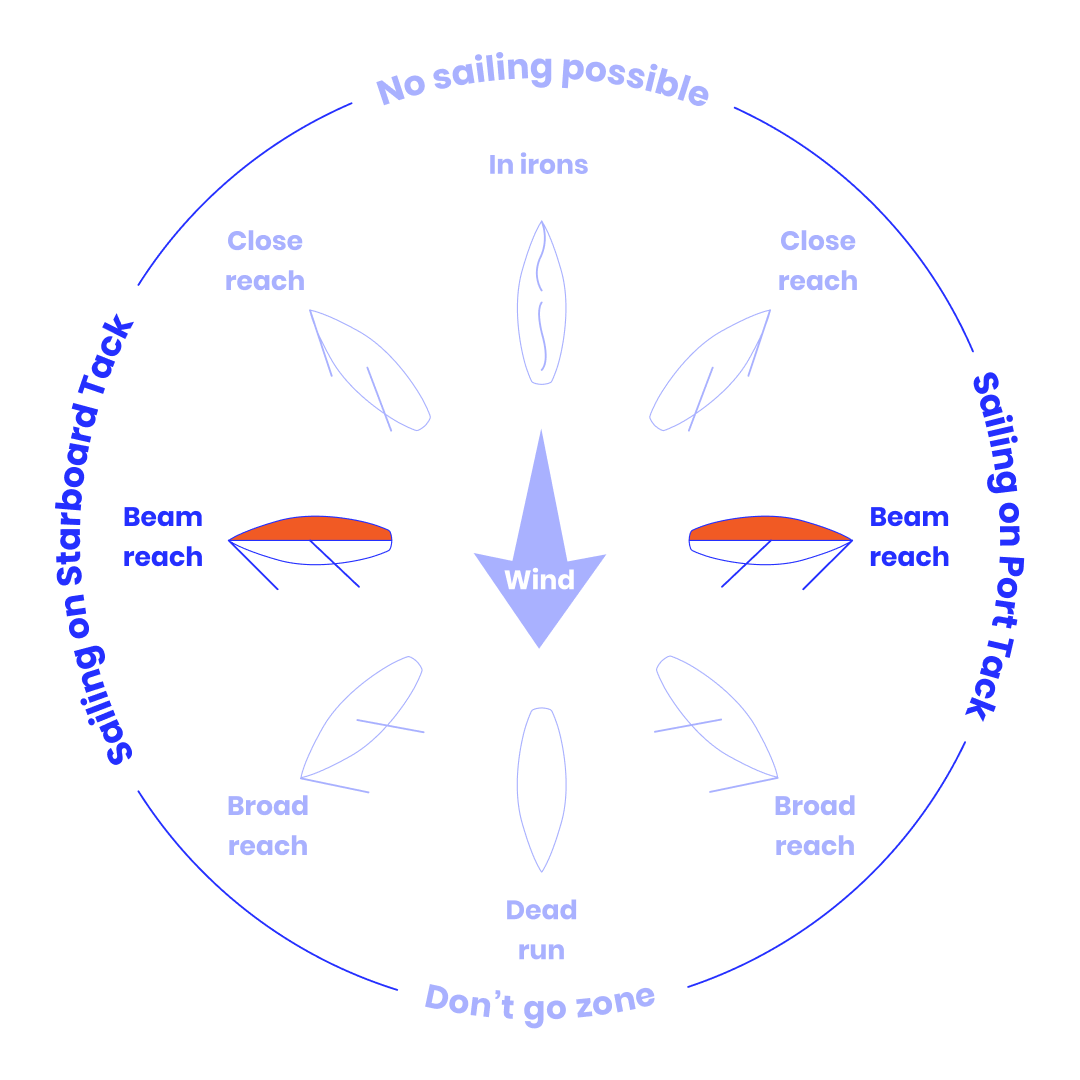
To control the sails, it's important to understand that the wind will fill them and pull them away from you, while you tighten or loosen the lines (ropes) to control the position of the sail.
In simple terms, the main sail is controlled using a line called a ‘main sheet’, and the head sail (or jib) is controlled using a line known as a ‘jib sheet’.
If you release the sail too much, it may begin to flutter, causing the boat to lose speed and control. On the other hand, if you pull in the sail too tightly, the boat will experience excessive wind load, also leading to a loss of speed and control.
So, the sail trim involves ensuring the sails are neither too loose nor too tight, capturing the optimal amount of wind for a smooth and controlled sailing.
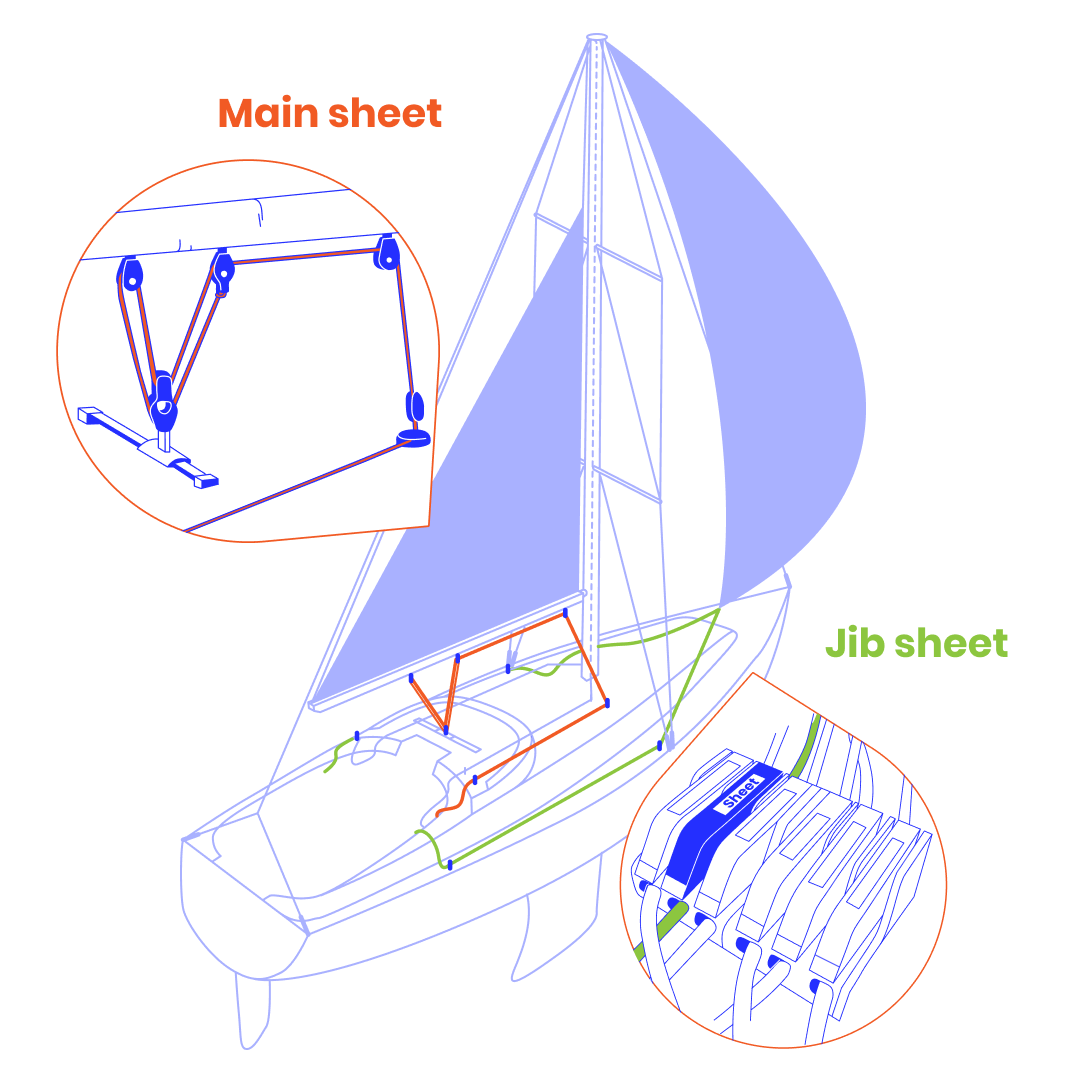
Practically speaking, when the wind blows from the side of the boat, the sails will tend to be perpendicular to the hull, so sail tuning involves trimming the sails to achieve a 45-degree angle relative to the position of the boat and the direction of the wind.
Typically, special strips of fabric called 'telltales' are attached to both sides of the sail, helping determine the correct position of the sail relative to the wind flow. The perfect sail trim is achieved when both telltales are flowing evenly.
Here are the five steps for the Beam Reach technique:
• Prioritize safety and always wear appropriate safety gear.
• Position the boat correctly by steering either closer or further into the wind.
• Adjust both the sails to ensure they are filled with wind without fluttering.
• Monitor speed and telltale indicators to make timely adjustments.
• Stay informed about the weather and changes in wind direction and strength.
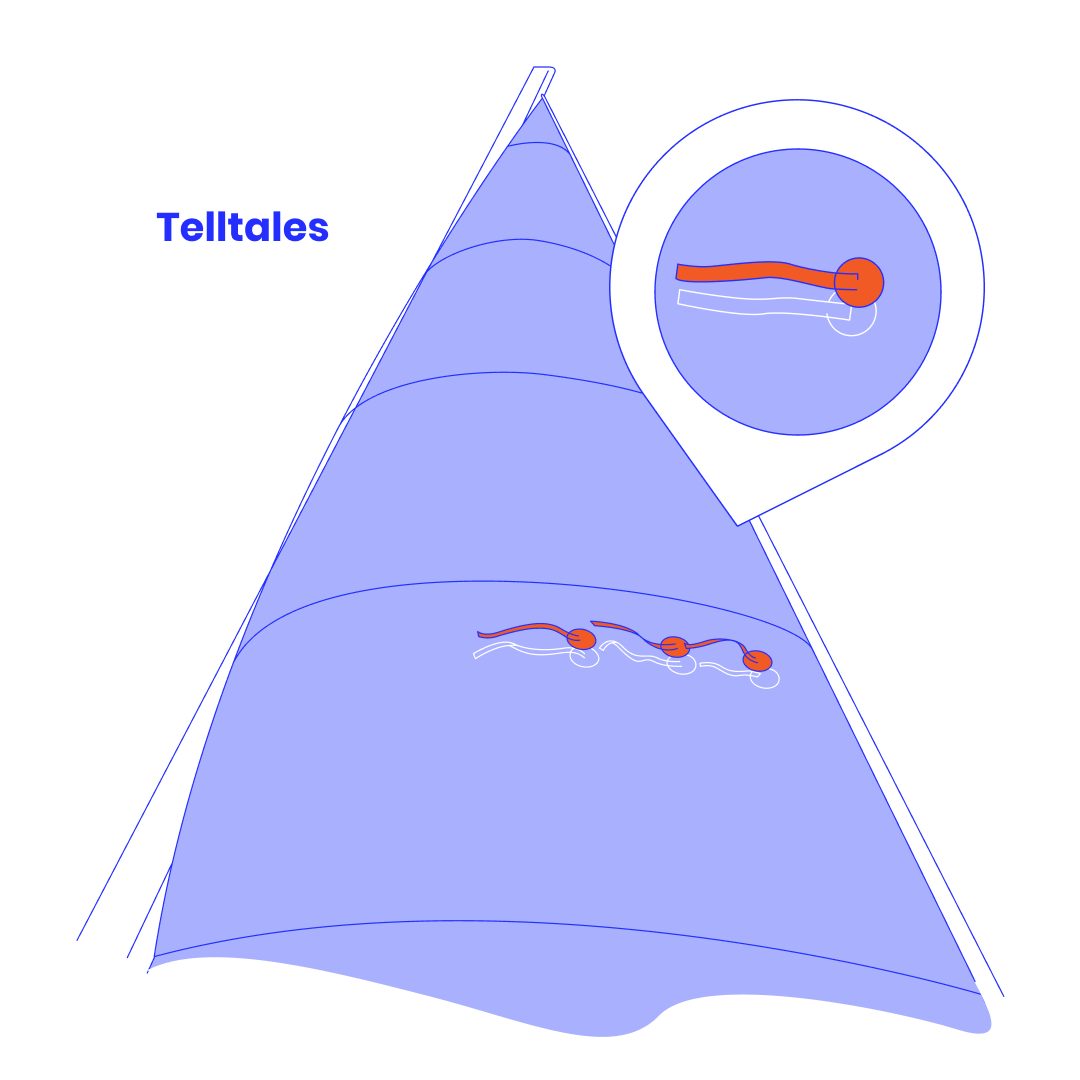
When a sailboat is in motion, it generates its own 'wind' called the 'apparent wind'. In simple terms, 'apparent wind' is the wind you feel when you're moving.
When you are standing still on a windy day, you feel the 'true wind' or 'actual wind'. However, when you move, even if the 'true wind' is coming from the side, you'll also feel an 'apparent wind' created by your motion.
By adjusting the sail angle, sailors can also catch the apparent wind, which, in some cases, can be even stronger than the actual wind. This generates more overall lift and forward thrust, allowing sailboats to reach speeds beyond the speed of the true wind.
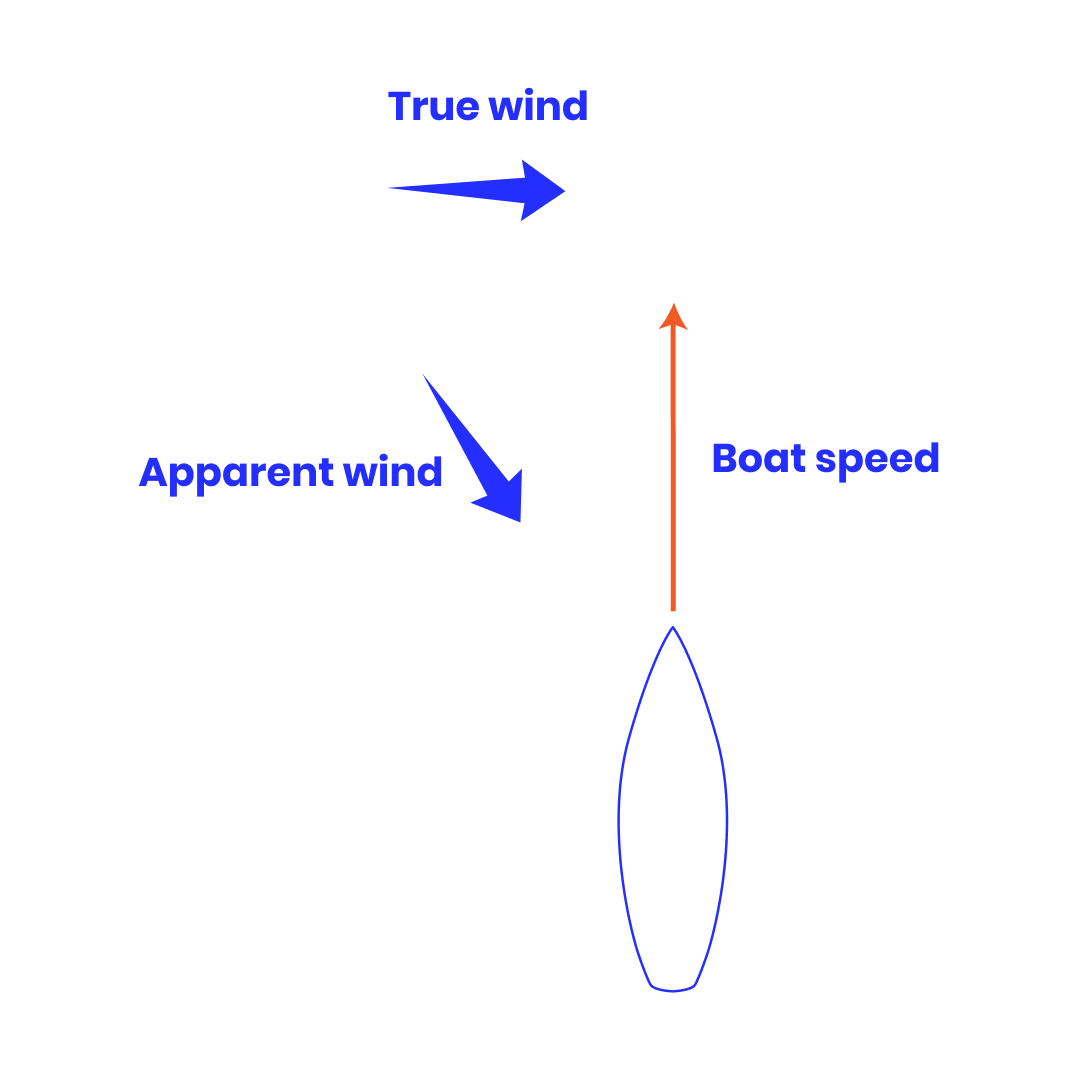
Broad Reach is a Point of Sail where the boat is positioned so that the wind blows from behind at an angle, meaning the boat is moving more closely to the same direction as the wind flow (downwind), and overall speed will depend on the speed of the true wind.
Therefore, compared to a Broad Reach, the apparent wind is typically stronger on a Beam Reach because the boat is positioned perpendicular to the wind direction, allowing the boat's forward motion to generate additional apparent wind.
In addition, the Beam Reach offers a good balance between the 'heeling force' of the boat and forward propulsion. It minimizes drag while maintaining stability and maximizing speed. So, when the sails are set to optimally harness both the true and apparent winds' power, it contributes to enhanced boat speed.
Now you've learned that the combination of the true wind and the boat's speed creates a stronger apparent wind at the Beam Reach, contributing to increased overall boat speed. This often makes the Beam Reach faster compared to the Broad Reach.
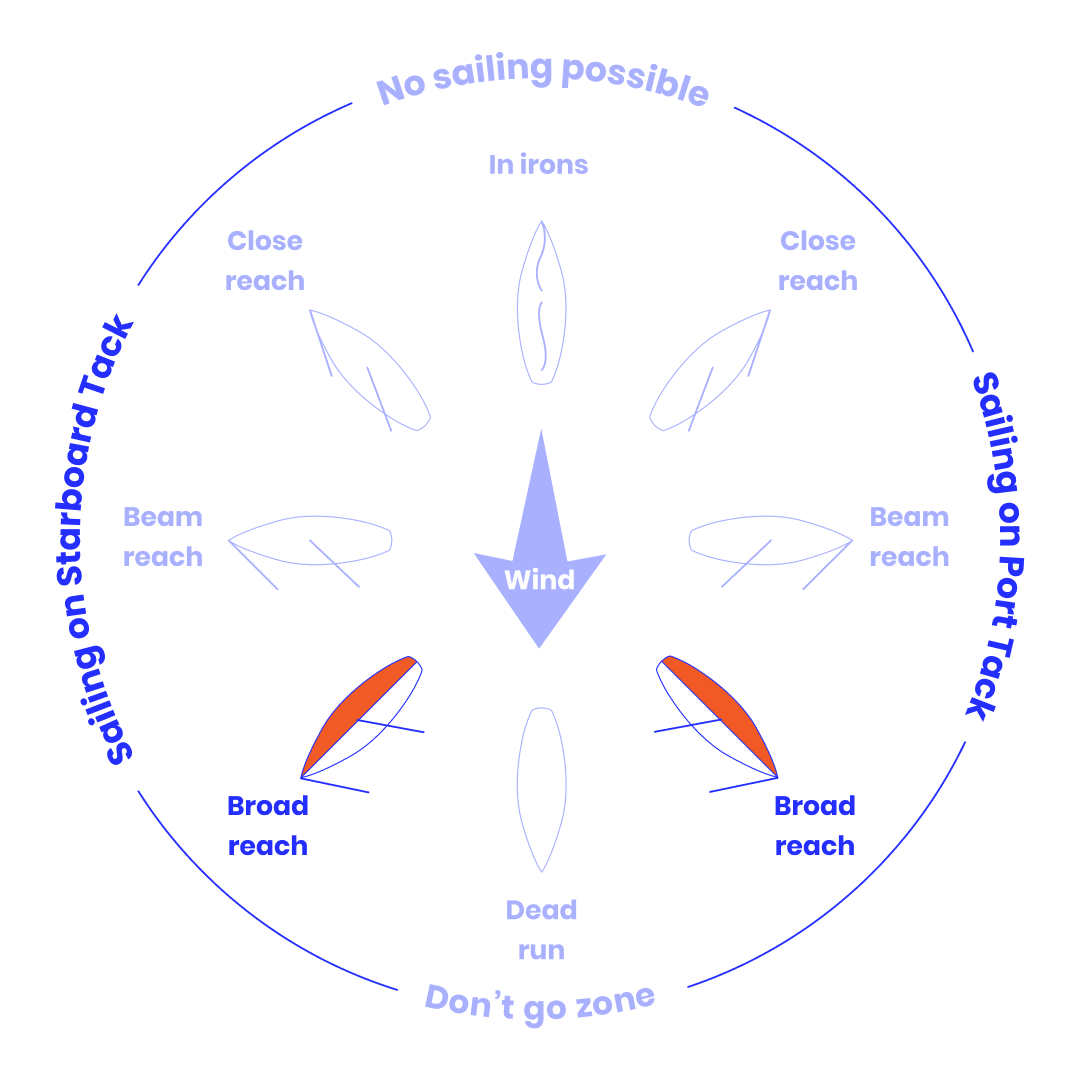
Whether you're just starting to learn how to sail, looking to refresh your knowledge, or aiming to train future passengers on your vessel, you’re welcome to download our engaging mobile app. It offers a free online sailing course and a comprehensive nautical glossary for quick access to all the challenging terminology. Available on both iOS and Android!
Receive email notifications whenever we publish new and exciting content, stay informed and inspired!
Learning to sail has never been this interactive and accessible. Explore our engaging sailing course today, it's free and fun! The mobile app is available on both iOS and Android
Receive email notifications whenever we publish new and exciting content, stay informed and inspired!